Sustainable clothing is a goal that many of us strive for. The fashion industry doesn’t always make our search easy, though. There are so many fabrics to choose from. How can you tell what is good for the environment? What are the most sustainable fabrics?
The most sustainable fabrics are made from organic or recycled fibers. These include organic cotton and recycled nylon. Sustainable fabrics also include materials that have been repurposed from their original intent. Things like deadstock fabric and recycled clothing. Even recycled plastic bottles can be used to make sustainable polyester fabric.
In this article, you’ll discover 14 of the most sustainable fabrics. You’ll also learn the key things to look for in sustainable material.
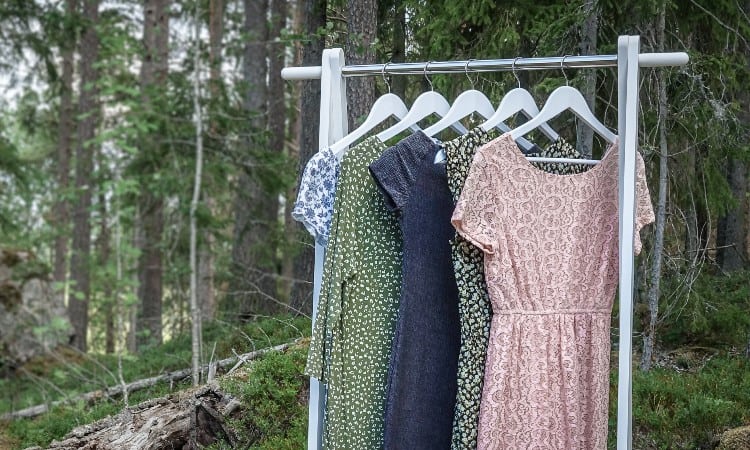
What Is a Sustainable Fabric?
In simple terms, a sustainable fabric has been produced in a sustainable manner. But there is slightly more to it than that. You see, it isn’t just the fabric that can be considered sustainable. The yarn used to make the fabric can be too. Both in terms of what it has been derived from to how that raw material was collected.
In an ideal world, all fabric used in the clothing industry would be 100% sustainable. From the initial production or harvesting process to the end of a garment’s useful life. Or better still, to the point where the material can no longer be recycled.
How do you know the fabric in your new shirt has sustainable elements? The first place you should look is the garment care label. That should give you a breakdown of the fibers within the material. If it has a high percentage of natural fiber content, then it stands a good chance of being somewhat sustainable. But then, so does a shirt made from recycled polyester.
Identifying the sustainability of your clothing can be confusing. It’s not as simple as knowing if your shirt is natural or synthetic. The truth is sustainability isn’t restricted to natural products.
This is because the production of some natural fibers can cause environmental damage, making their sustainability questionable. Similarly, synthetic materials aren’t automatically excluded from being sustainable simply because they are oil-based.
Sometimes, making a synthetic fiber can be less resource intensive than its natural counterpart. This means that fossil fuel products aren’t always bad for the planet.
There are four key things to consider when you are trying to determine a material’s sustainable credentials. Not all fabrics can meet all four, but as long as they match at least one, they can be considered sustainable.
14 Most Sustainable Fabrics
So far, we’ve looked at the attributes that can help boost a fabric’s sustainability. Although the material may match one or two of the criteria listed above, there is usually something that lets the textile down. Remember, we aren’t at the stage where all materials can be 100% sustainable. Not yet, anyway.
Some fabrics score higher on the sustainability scale than others. Here’s a list of 14 of the most sustainable fabrics available today. You may be surprised to find several synthetic materials on this list!
1. Bamboo

I’m starting the list with a slightly contentious fabric. Bamboo viscose is derived from the pulp of the bamboo plant. It’s a plant that grows quickly, needs almost no chemical fertilizer or pesticides, eats carbon like it’s going out of fashion, and is a high oxygen producer. So far, its sustainability is through the roof.
But, many people believe it to be an unsustainable material due to the production process. Partly due to the deforestation required to make room for the bamboo plants and partly because of the chemicals needed to turn it into viscose.
While its true traditional production methods are detrimental to the environment, the bamboo-based fabric can be produced using modern, more ecologically sound techniques. This is why bamboo is on this list. You just need to make sure you get the right type of bamboo textile.
The most sustainable bamboo is organic bamboo linen or bamboo viscose made using the lyocell process. You can find this type of bamboo viscose referred to as Monocel.
2. Cotton – Organic and Recycled
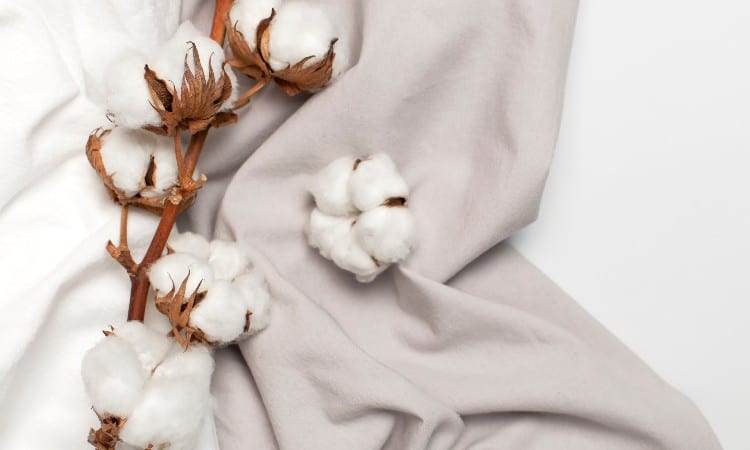
Cotton is a natural fiber, so you could be forgiven for thinking that all cotton products are sustainable. Unfortunately, that’s not the case. Conventional cotton grown and processed using traditional methods is one of the most resource-intensive fibers on the planet.
The cotton you need for a sustainable closet is organic or recycled. The production of organic cotton uses less energy and water than standard cotton. Organic cotton plants are also free from chemical fertilizers and pesticides. You’ll find that to be classed as organic; the cotton has been certified by the Global Organic Textile Standard (GOTS).
Recycled cotton is even better for the planet. This cotton uses pre-made cotton fabric to make new garments or other fabric items. By doing so, it eliminates the consumption of resources needed to grow and harvest cotton plants.
Ethical fashion brands tend to use recycled cotton. There are a few certifications to look for, the Global Recycle Standard (GRS) and the Recycled Content Standard (RCS).
Both organic and recycled cotton meet the International Oeko-Tex Association’s Standard 100 Label. This label certifies that a garment and the fabric it contains are harmless to human health. You’ll most likely see an Oeko-Tex 100 mark on the garment care label.
3. Deadstock Fabric
Another source of material used by ethical clothing manufacturers is deadstock. Normally when a fast fashion brand brings out a new clothing line, they will order more fabric than they need.
This could be for several reasons. They may want to make more of the clothing line later. Or, it could be because of economics. Buying in large quantities is cheaper.
There is a downside to buying too much material. Sometimes it ends up as waste fabric. Known as deadstock, it’s stock that is surplus to requirements and of no use to the original purchaser.
Deadstock can be resold and used by other manufacturers who do have a use for it. By using up the surplus material, ethical manufacturers can reduce the need for making new fabrics. They can also prevent the fabric from ending up at a landfill site.
It’s not just new fabrics that can be reclaimed. Unused vintage fabric can also be utilized the same way, even if it’s been sitting in a warehouse for decades. As long as it’s been stored correctly and is free from damage, any unused second-hand fabric is a viable option for sustainable fashion.
4. Econyl
Essentially a recycled nylon, Econyl is a synthetic material made from waste products. The production of Econyl uses green energy to convert previously used nylon products like fishing nets into a new fabric with properties similar to nylon.
As the main ingredient in Econyl is regenerated nylon, telling the two fabrics apart would be tricky. Econyl mimics the texture, longevity, and elasticity that nylon materials are known for. So you get the same fabric without heavy crude oil consumption or the large Co2 emissions.
However, as with many fabrics, it’s not all good news with Econyl. It’s a fabric that contributes to microplastics in the world’s waterways. Because of this, the most sustainable way to use Econyl is in backpacks or sneakers. Or any item that doesn’t require regular washing.
Even so, it meets the requirements of the Global Recycle Standard (GRS) and the Recycled Content Standard (RCS). You may also find the Oeko-Tex 100 mark on the garment care label.
5. Organic Hemp
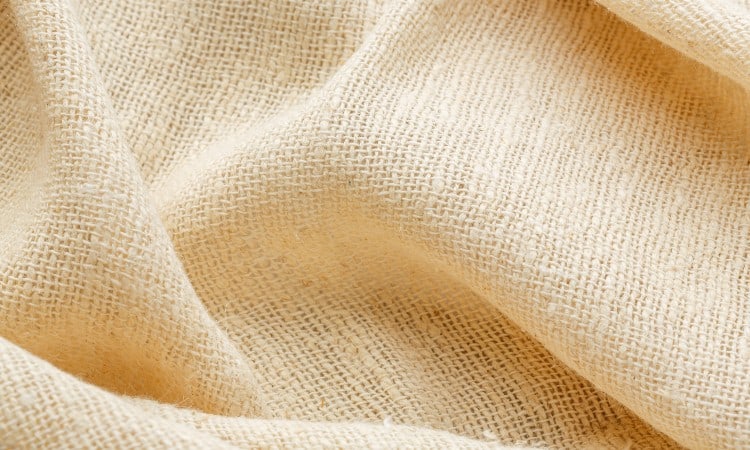
There’s more to hemp than clothing. You can find it in ropes, boat sales, and cosmetics. Incredibly versatile and sustainable, hemp is low maintenance.
It can get by with little water and doesn’t need pesticides. Growing hemp plants can even return much-needed nutrients to the soil. Go for organic hemp that hasn’t been treated with chemical fertilizers, and the sustainability of this unassuming plant is hard to beat. It’s fast-growing too.
With built-in sun protection and natural resistance to bacteria, hemp is an all-around good guy when it comes to ecological properties. You can even eat it. Although, you probably don’t want to do that when it’s made into a fabric!
Hemp qualifies for certification by the Global Organic Textile Standard (GOTS), the Organic Content Standard (OCS), and the OEKO-Tex 100. So watch for those markings when you choose your hemp.
6. Organic Linen
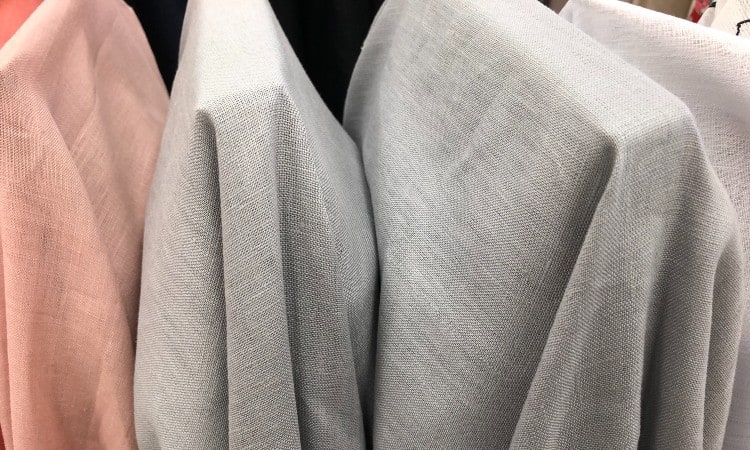
Hemp and linen are very similar materials. Both are lightweight and have fantastic breathability. They both score highly on the sustainability score too. The only main difference is linen comes from the flax plant.
Like hemp, linen doesn’t need fertilizers, pesticides, or a high water intake. However, the flax plant isn’t a quick-growing plant, so linen cannot be produced in the same quantities as hemp.
Linen fabric can be made from every part of the flax plant. So there is very little waste. It can even grow in poor soil and helps rejuvenate the ground by replacing vital nutrients.
Although standard and organic linen are considered sustainable, the organic variety has a higher score. When searching for an organic version, keep an eye open for certification from the Global Organic Textile Standard (GOTS). As well as the Oeko-Tex 100 and the Organic Content Standard (OCS).
7. Pinatex
Made from pineapple leaves, Pinatex uses discarded leaf fibers to create faux leather. Also known as vegan leather, this version is considered more sustainable than synthetic varieties because pineapples are a natural food source.
Repurposing the leaves into a leather-type material reduces the amount of waste left behind during the processing of pineapples for human consumption. The leaves are biodegradable. So as long as the clothing isn’t treated with chemicals to prevent that, it can be considered a sustainable fabric.
This fabric was introduced in 2017, so it is relatively new in fashion apparel. It also has a bit of a disadvantage. If its popularity as a leather substitute grows too quickly, we could see more deforestation to make room for pineapple trees.
However, the fabric’s production uses non-toxic chemicals and a closed-loop processing system. Pinatex doesn’t use any other raw material in its production and safeguards the livelihoods of Philippine farmers. Watch for the Oeko-Tex 100 mark to ensure your Pinatex is truly sustainable and not an imitation.
8. Qmonos
Five times stronger than steel and more flexible than nylon, Qmonos is a genetically modified synthetic spider silk. Although it uses spider genes and microbes, no spiders are used or harmed in the production process, making it vegan and arachnid friendly.
Qmonos is 100% biodegradable, lightweight, and comfortable to wear. However, while it may be one of the most sustainable fabrics on the planet, it’s not exactly taking the fashion industry by storm. Not yet, anyway.
This one is a sustainable material for the future. At the moment, you’ll find that it’s incredibly expensive and difficult to locate.
9. Recycled Polyester
Made from recycled plastic bottles, recycled polyester or rPET is one of the more surprising sustainable fabrics. Particularly when you consider it has better sustainable credentials than standard cotton.
Not only does the production of rPET reduce carbon emissions, but it also uses fewer resources than making a polyester fiber from scratch. Not to mention removing all those plastic bottles from landfill sites.
Although you may not have been aware of recycled polyester being used for garments, brands like Patagonia and Reformation have used it for years. You can make anything from it, from a nice fluffy fleece hoodie to activewear for your gym session.
There is a downside; it is a synthetic, after all. Recycled polyester is a bit like Econyl; it can release microplastics into the water system. Using a special microplastic filter bag to wash rPET can help counteract that.
To make sure you get recycled polyester instead of standard polyester, watch for these certifications. The Recycled Content Standard (RCS), Oeko-Tex 100, and the Global Recycle Standard (GRS).
10. Recycled Clothing
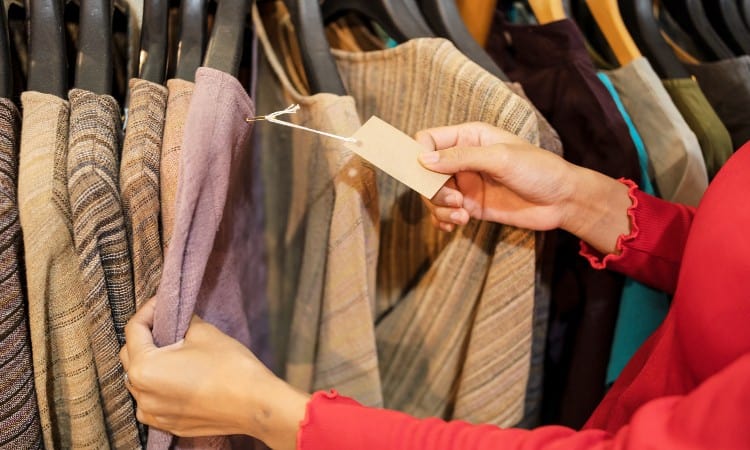
Fast fashion has played a large part in encouraging the quick turnaround of garments in our closets. Instead of wearing something until it falls apart, clothes tend to get replaced when new trends come in.
This creates a lot of waste clothing. It also causes high demand for more new clothes, leading to the production of more new materials. Producing fabric from scratch uses valuable resources in large quantities. The processes used to make textiles also create carbon emissions that can lead to climate change.
Waste clothing can be recycled in several ways. Either by donating it to a local charity to distribute to the needy or swapping garments with your friends. Any item of clothing that is new to you can keep you looking fashionable and in vogue.
That’s not all. Older clothes that have reached the end of their useful life can be used to make new fabrics. They are deconstructed, the fibers are cleaned, and then respun into fresh new yarns.
Recycling unwanted garments can help reduce the overconsumption of fossil fuels, plants, water, and animals and reduce the damage to the planet. As a bonus, it can save you money too!
11. Silk
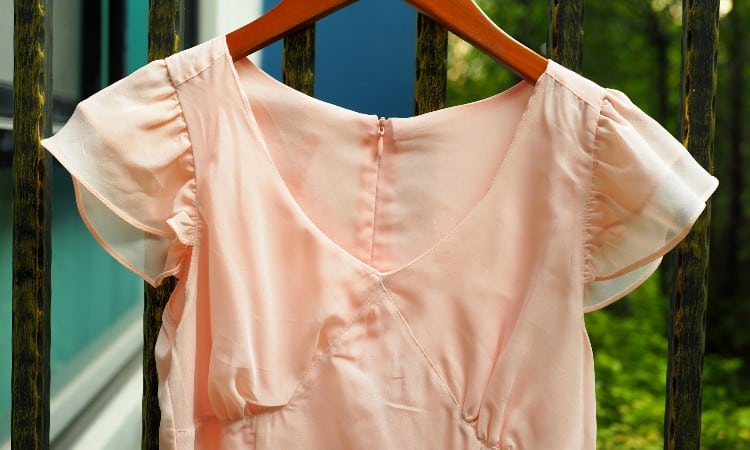
Another contentious fabric, silk, is derived from the cocoons of silkworms. As the worms tend to die in the production process, silk is considered by many as unsustainable.
As with some of the other fabrics on this list, the sustainable credentials of silk are determined by the type of silk you have. While traditionally produced silk may be as unethical as standard cotton, things are starting to change.
Peace Silk, or Ahisma Silk, uses a different production process. Its non-violent procedure allows the silkworm to live out its natural life and become a butterfly. They are not subjected to fungicides, chemical sprays, or insecticides. To borrow a phrase from the movies, this means no silkworms are harmed during the making of Peace Silk.
If you want to add Peace Silk to your closet, watch for the OTEX-Certified Organic Silk mark. Another one to check for is the World Fair Trade Organisation Certification.
12. Tencel Lyocell
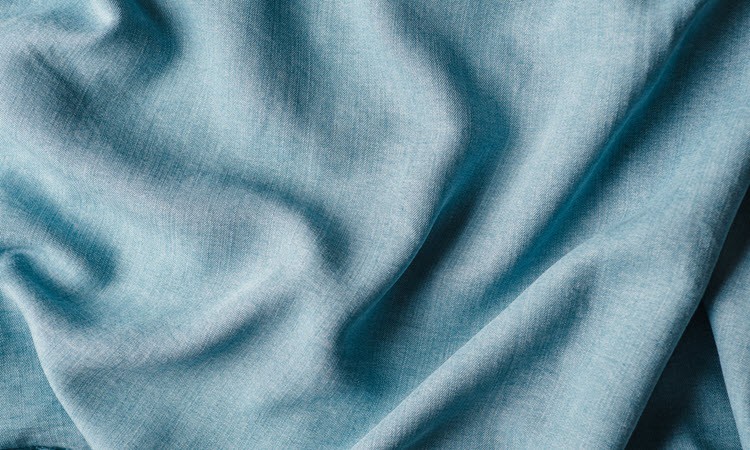
Tencel is a brand known for its reliance on sustainable forests, whose lyocell fabric uses wood pulp from sustainably managed eucalyptus trees as its base.
Eucalyptus trees can survive on small quantities of water and are naturally resistant to bugs, reducing the need for chemical pesticides that can pollute the environment.
That’s not all. Tencel lyocell uses the closed-loop system of production. Water and dissolving agents used in the process are recycled through the closed loop. That prevents 99% of the chemicals used from entering the world’s water systems.
Again, you have to check the label on the garment. Make sure it says Tencel lyocell. Other brands make lyocell fabric, but not all of it has the same level of sustainability. Tencel lyocell meets the standards set by the Oeko-Tex 100 and the Forest Stewardship Council (FSC).
13 Tencel Modal
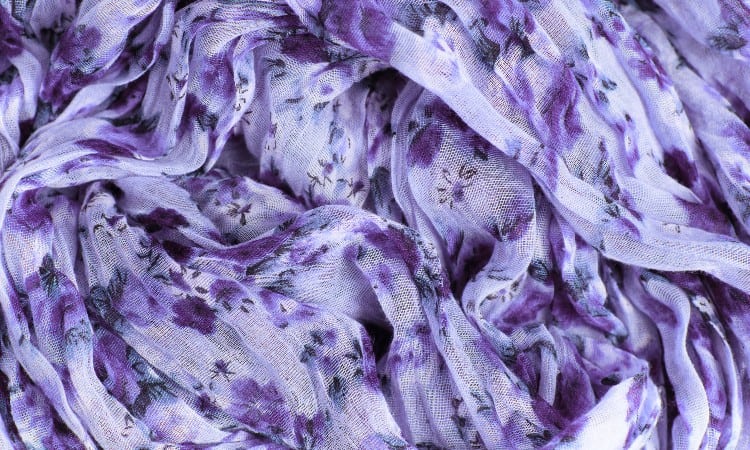
This fabric is made from the wood pulp of naturally grown beech trees. Known for its breathability and softness, modal fabric is produced similarly to lyocell. Using a closed-loop system, water and chemicals needed in the manufacturing process are recirculated rather than being washed through the system.
As with many fabrics on this list, you have to watch the type of modal you get. Not all are as kind to the environment as the Tencel brand. They use trees from sustainable forests. A Tencel modal fabric can reuse up to 99% of the necessary solvents, making it one of the best modal textiles for sustainability.
Better still, Tencel modal is also carbon-neutral and biodegradable. You can also compost it. The fibers in Tencel Modal are long-lasting and can withstand repeated washing and drying, giving this fabric longevity that can outlast cotton.
Certifications to watch out for with Tencel Modal include the Oeko-Tex 100 and one from the Forest Stewardship Council, or FSC.
14. Wool
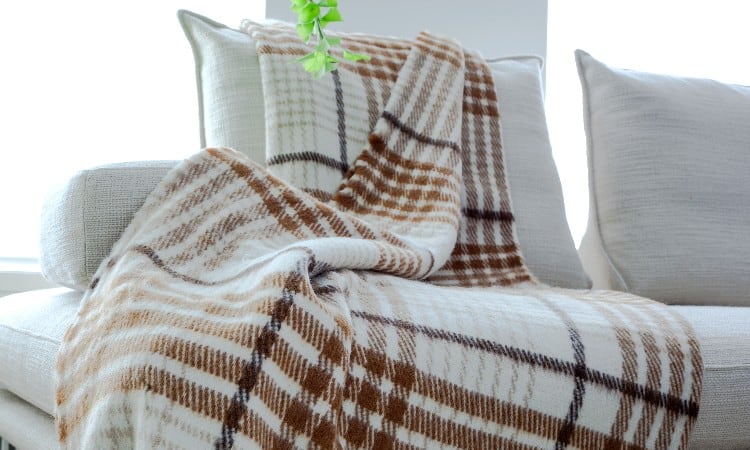
Sheep, goats, camels, alpacas, and even yaks are all sources of wool. The great thing about wool is, collecting the fleece from the host animal is relatively harmless. In some cases, sheering the fleece helps the animal stay cool in warm weather.
Wool is biodegradable, easy to compost, and can last a long time. However, not all wool is ethically produced, which dents the sustainable qualities somewhat. Sometimes the animals are mistreated, leading to their pain and suffering. So too, are the people who work in the industry.
Once again, you need to be careful when choosing your wool garments. Make sure the wool is from an ethical source that takes care of both animals and workers. You can add some sustainable points to your wardrobe by using recycled wool.
Certifications to look for include, the Responsible Wool Standard (RWS), Certified Animal Welfare Approved, Recycle Claim Standard (RCS), and the Oeko-Tex 100.
Where Does the Material Come From?
The raw material that is used to make fabric can be derived from two main sources. You have natural fibers and synthetic options. Both varieties can be sustainable.
Natural fibers are produced using items from nature. This includes plant-based fibers like linen or cotton and animal-based products like leather, silk, and wool. While it’s easy to believe all-natural fabrics are sustainable, it isn’t true.
Animal-based products like silk and leather aren’t considered sustainable because they result in the death of the host animal. Silk is harvested from the cocoons of silkworms. Of the two, silk is thought to be the least sustainable because there is no other reason for the death of the animal other than the production of fabric.
Some plant-based fibers can be equally problematic. Cotton is plant-based and relies heavily on chemicals to ensure a healthy crop. This can be in the form of pesticides and even artificial fertilizers. Using both can be detrimental to the environment and the people and animals that come into contact with them.
For a natural fiber to be considered as sustainable as possible, it needs to be organic. The lack of chemical enhancements like fertilizers makes an organic fabric a more ethical choice for the environment. For an animal-based fiber to be sustainable, the animal needs to remain alive and unharmed.
In contrast, synthetic fibers are man-made. They are produced from fossil fuels and used to imitate the characteristics of some natural fabrics. Examples include polyester, nylon, and acrylic.
Synthetics have long been considered unsustainable. But this isn’t completely true either. Oil is a finite resource and the production of synthetics from scratch does involve the consumption of this valuable commodity. However, their production to replace natural fibers like silk does help safeguard the lives of the animals.
It’s kind of a catch-22 with synthetic fibers. They aren’t sustainable in one sense, but they can outlast natural fabrics and don’t need as much care. This gives them a little bit of sustainability as you don’t have to replace them as often. Having said that, the best synthetic material from a sustainable point of view is one that has been recycled.
How Are the Raw Ingredients Processed?
Sometimes the raw fibers need processing before they can be turned into a fabric. One such material is Rayon. Although it’s made from wood pulp, rayon is treated with chemicals to make it soft enough to wear. These chemicals make the fabric unsustainable.
It isn’t just softening chemicals you have to watch out for. Some materials have to be bleached before they can be used. Others, like synthetics, need special dyes to add color to an otherwise gray and dismal fiber. Those dyes can be carcinogenic.
Adding any chemical substance to a fiber makes the resulting fabric ineligible for a sustainability title. Even if it’s added after the fabric has been turned into a garment, formaldehyde is one such chemical.
Often added to prevent wrinkles in the fabric, formaldehyde is also added to new clothing to prevent mold during transit from one country to another. Particularly if the clothing is made from cotton and being transported by ship. Cotton absorbs moisture and if it stays wet, it starts to smell and turn a funny color.
The problem with formaldehyde is it can be toxic and cause skin irritation. It also negates any sustainable credentials the garment may have had before it was coated. So your 100% organic cotton jeans that started with such promise are now at the same sustainability level as a pair with synthetic content.
Can the Material Be Recycled?
You can recycle unwanted clothing by donating it to your local thrift store or charity shop. It doesn’t matter if the garment is made from synthetic or natural fibers. It is welcome as long as it’s in good wearable condition. Not only do you help the charity, but you also prevent the usable fabric from ending up in a landfill.
Alternatively, if your cotton t-shirt is threadbare and losing its structural integrity, you can donate it to a fabric recycling facility. It will be broken down into its fibers and then rewoven into new fabric. Sometimes, older fabric can be used to make paper products too. These days, even synthetic fibers can be recycled into new textiles.
Don’t forget you can also repurpose or upcycle your clothing and other fabric items. Any material with some integrity left in it can be turned into something else. Denim jeans, for instance, even if they are stretch jeans, can be used to make bags, aprons, quilts, and rugs.
When it comes to fabric, you can recycle, repurpose, reuse, and donate all of it, regardless of its fiber content. This is one area where both natural and synthetic fibers get a sustainability tick.
Is the Fabric Biodegradable?
There comes a time when the fabric in your clothes can’t be used anymore. It’s beyond saving and only one thing left to do with it. Throw it in the trash.
In some areas, burnable fabrics like cotton can be incinerated along with cardboard to produce electricity. However, we’re not at the stage where every location in the world has the facilities to do that. Then there are the materials that can’t be burned, particularly if they contain any kind of synthetic fiber.
These fabrics will end up buried under tons of garbage at a landfill site. Natural fibers will biodegrade relatively quickly, along with the rest of the trash. But, unfortunately, this is where synthetics lose out on sustainability points. Synthetics are not biodegradable.
As oil-based, they have more in common with plastic than fabric. Just like plastic bottles, synthetic materials can take decades, if not generations, to decompose.
How to Be Sustainable Even if Your Clothing Isn’t
It’s not possible to purchase a fabric or a garment that is 100% sustainable. Although things are improving, we’re just not there yet. Because of that, you need to change how you buy your clothes to be as sustainable as possible.
The first thing that you should do is buy better clothing. Fast fashion is designed for several seasons, so the clothing isn’t necessarily well-made or long-lasting. By purchasing higher quality garments, you’ll find they will last longer. Meaning you don’t have to buy clothing so often.
Although it can be tempting to grab the latest style hitting the catwalk, you need to think about your purchase. Is that garment going to suit your lifestyle? Will you wear it more than once? To be sustainable, you need to answer both those questions with “yes”. If you can’t, don’t buy the item.
Next, check your garment care label. For a sustainable wardrobe, you need to avoid acrylic, viscose rayon, new polyester, and new nylon. Look for recycled polyester, Econyl, and Tencel lyocell instead.
The best way to be as sustainable as possible is to buy second-hand clothing. You can repurpose garments into something new and create your own sustainable style.
Conclusion
Being as sustainable as possible is about changing the way you think about textiles. This list of the 14 most sustainable fabrics can help you in your search for ethical clothing.
Has this article helped you identify sustainable fabrics? Were you surprised to find synthetic textiles on this list? Let me know in the comments.